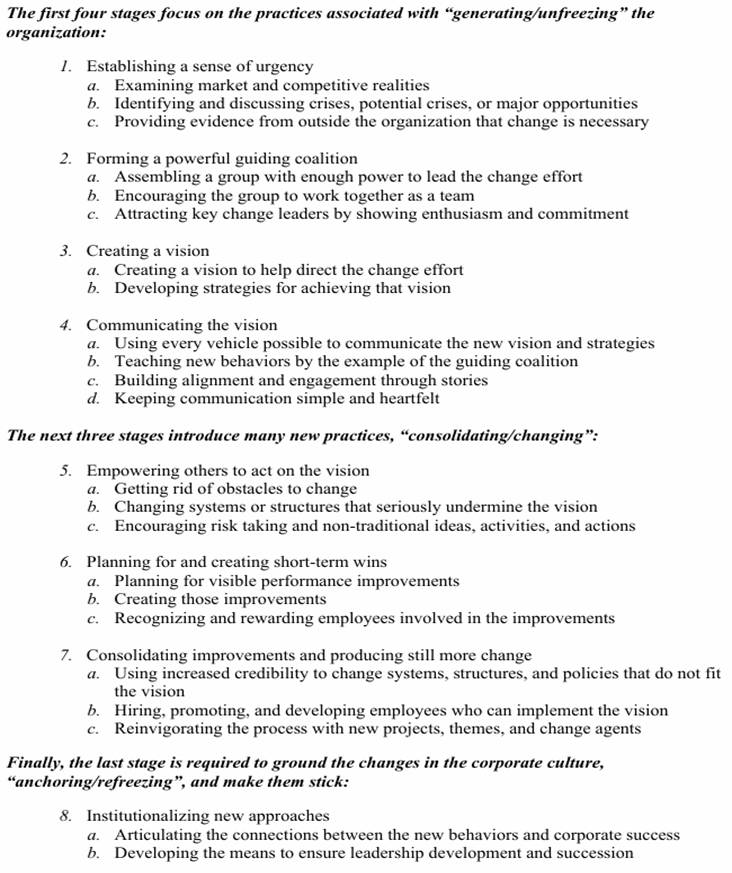More on Kotter’s 8 Steps (Framework 45)
Two summaries of Kotter's 8 steps to change management
1. Summary of Kotter' 8 Steps (1)


(source: Aldemir, Enis, 2010)
2. Second summary of Kotter's framework
Kotter’s approach can be described as ‘generating-consolidating-anchoring’; it is similar to Lewin’s of ‘unfreezing-changing-refreezing’ framework
The guiding coalition needs to be based on 3 key components:
- ● level of trust,
- ● shared objectives
- ● right composition, ie expertise, influence/ power (formal and informal), credibility, etc
Effective visions are focussed enough to guide decision-making yet are flexible enough to accommodate individual initiatives and changing circumstances. the real power of a vision happens when most people have a common understanding of its goals directions
Individuals will not make sacrifices, even if they are unhappy with the status quo, unless they believe that useful changes is possible.
“...Empowerment literally means giving employees power which makes them able to do what's required to be done in the change process. Empowerment also means providing employees with knowledge, skills, opportunity, autonomy, self-confidence and resources to administer themselves, and be accountable for the change process…”
Gill as quoted by Enis Aldermir, 2010
There are 4 main barriers blocking empowerment
- ● processes, systems, rules and regulations, etc discourage autonomy
- ● lack of needed expertise to handle the change
- ● management discourages employees from taking action
- ● organisational structure makes it difficult for employees to act, eg too hierarchical, bureaucratic, etc
“...managing people is about managing feelings. Many employees take change as a very personal and emotional issue, and acceptance of change can be difficult…”
Enis Alder-ir, 2010
